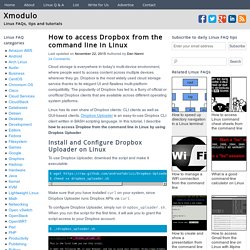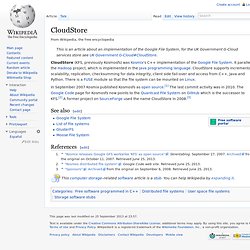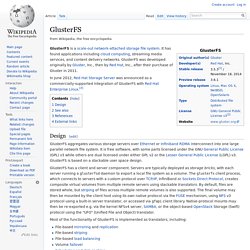

How to access Dropbox from the command line in Linux. Cloud storage is everywhere in today's multi-device environment, where people want to access content across multiple devices wherever they go.

Dropbox is the most widely used cloud storage service thanks to its elegant UI and flawless multi-platform compatibility. The popularity of Dropbox has led to a flurry of official or unofficial Dropbox clients that are available across different operating system platforms. Linux has its own share of Dropbox clients: CLI clients as well as GUI-based clients. Dropbox Uploader is an easy-to-use Dropbox CLI client written in BASH scripting language. In this tutorial, I describe how to access Dropbox from the command line in Linux by using Dropbox Uploader. Install and Configure Dropbox Uploader on Linux. Is OpenStack Object Store a Base for a Video CDN?
We Recommend These Resources Video CDN are amazing from technical aspect as we are talking about high scale systems with some unique business cases.

I would like to share with you some design aspects regarding these systems.The Video CDN Case Studies Video CDN includes two main case studies: VOD Case Study: This is a long tail/high throughput scenario where you need a high capacity disks, where only a small portion of it will be used extensively. In order to create a cost effective solution you should have: High capacity storage system with low IOPS needs.
Servers with 24-36 2-3TB SATA disks will provide a up to 100TB raw storage with a tag price of $15K. Replication and auto failover mechanism that can distribute content between several servers and can save us from using expensive RAID and Cluster solutions. Why OpenStack Swift/Object Store? Open stack is OSS and therefore easy to evaluate. System Sizing The Fast Lane: How to Start? 1. 5.delay_auth_decision = 1 Get user/pwd Upload file 2. Castle: Storage Stack Alternative for Big Data.
CloudStore. In September 2007 Kosmix published Kosmosfs as open source.[1] The last commit activity was in 2010.

The Google Code page for Kosmosfs now points to the Quantcast File System on GitHub which is the successor to KFS.[2] A former project on SourceForge used the name CloudStore in 2008.[3] See also[edit] References[edit] Gfarm File System. GlusterFS. GlusterFS is a scale-out network-attached storage file system.

It has found applications including cloud computing, streaming media services, and content delivery networks. GlusterFS was developed originally by Gluster, Inc., then by Red Hat, Inc., after their purchase of Gluster in 2011. In June 2012, Red Hat Storage Server was announced as a commercially-supported integration of GlusterFS with Red Hat Enterprise Linux.[3] Design[edit] GlusterFS aggregates various storage servers over Ethernet or Infiniband RDMA interconnect into one large parallel network file system. GlusterFS has a client and server component. Most of the functionality of GlusterFS is implemented as translators, including: The GlusterFS server is intentionally kept simple: it exports an existing directory as-is, leaving it up to client-side translators to structure the store. GlusterFS has been used as the foundation for academic research[4][5] and a survey article.[6]
Lustre (file system) Lustre is a type of parallel distributed file system, generally used for large-scale cluster computing.

The name Lustre is a portmanteau word derived from Linux and cluster.[3] Lustre file system software is available under the GNU General Public License (version 2 only) and provides high performance file systems for computer clusters ranging in size from small workgroup clusters to large-scale, multi-site clusters. In December 2010, Oracle announced they would cease Lustre 2.x development and place Lustre 1.8 into maintenance-only support creating uncertainty around the future development of the file system.[12] Following this announcement, several new organizations sprang up to provide support and development in an open community development model, including Whamcloud,[13] Open Scalable File Systems, Inc.
(OpenSFS), EUROPEAN Open File Systems (EOFS) and others. By the end of 2010, most Lustre developers had left Oracle. MogileFS. XtreemFS - a cloud file system.